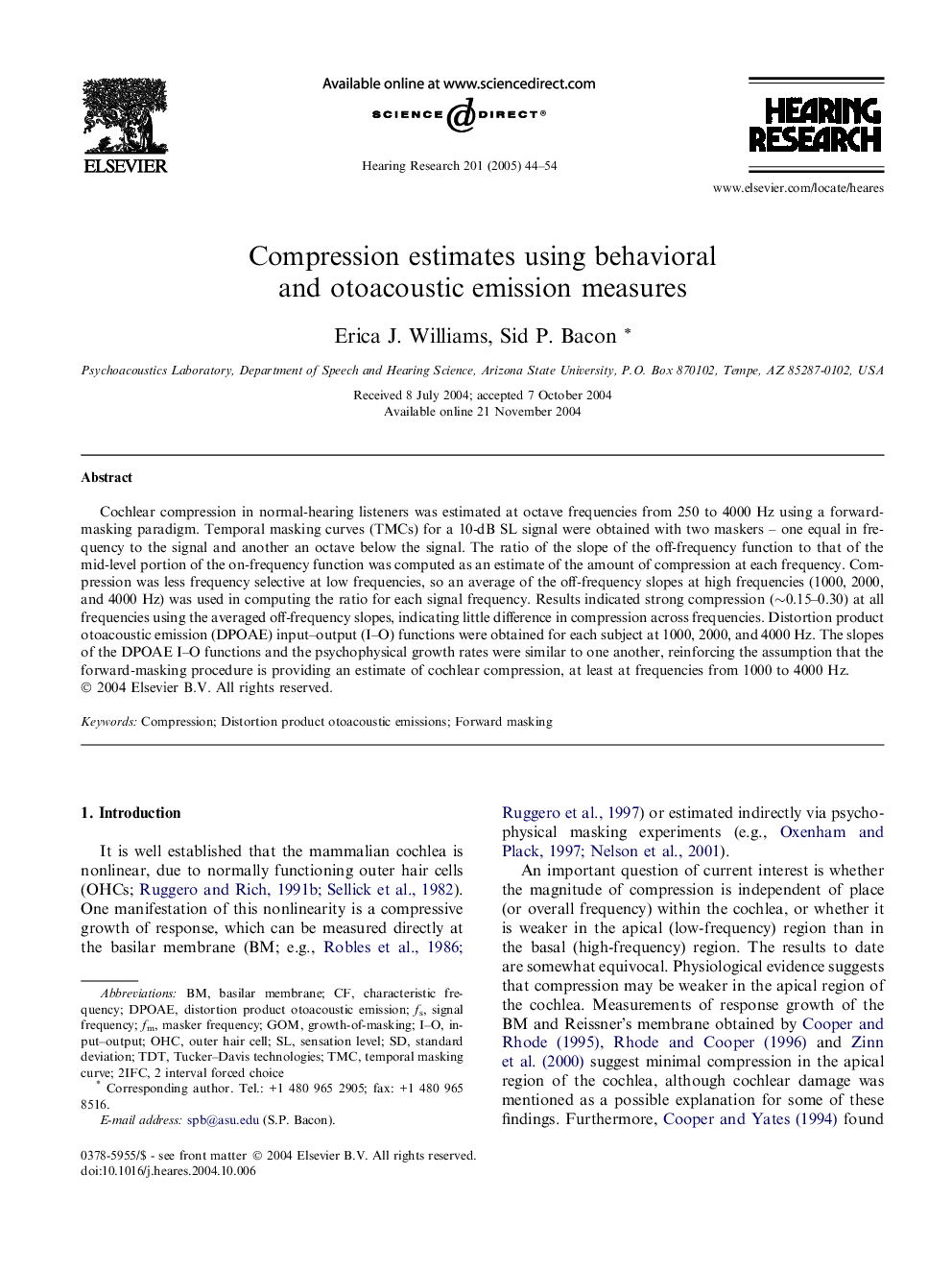| Article ID | Journal | Published Year | Pages | File Type |
|---|---|---|---|---|
| 9436725 | Hearing Research | 2005 | 11 Pages |
Abstract
Cochlear compression in normal-hearing listeners was estimated at octave frequencies from 250 to 4000 Hz using a forward-masking paradigm. Temporal masking curves (TMCs) for a 10-dB SL signal were obtained with two maskers - one equal in frequency to the signal and another an octave below the signal. The ratio of the slope of the off-frequency function to that of the mid-level portion of the on-frequency function was computed as an estimate of the amount of compression at each frequency. Compression was less frequency selective at low frequencies, so an average of the off-frequency slopes at high frequencies (1000, 2000, and 4000 Hz) was used in computing the ratio for each signal frequency. Results indicated strong compression (â¼0.15-0.30) at all frequencies using the averaged off-frequency slopes, indicating little difference in compression across frequencies. Distortion product otoacoustic emission (DPOAE) input-output (I-O) functions were obtained for each subject at 1000, 2000, and 4000 Hz. The slopes of the DPOAE I-O functions and the psychophysical growth rates were similar to one another, reinforcing the assumption that the forward-masking procedure is providing an estimate of cochlear compression, at least at frequencies from 1000 to 4000 Hz.
Keywords
Related Topics
Life Sciences
Neuroscience
Sensory Systems
Authors
Erica J. Williams, Sid P. Bacon,
